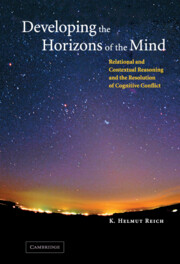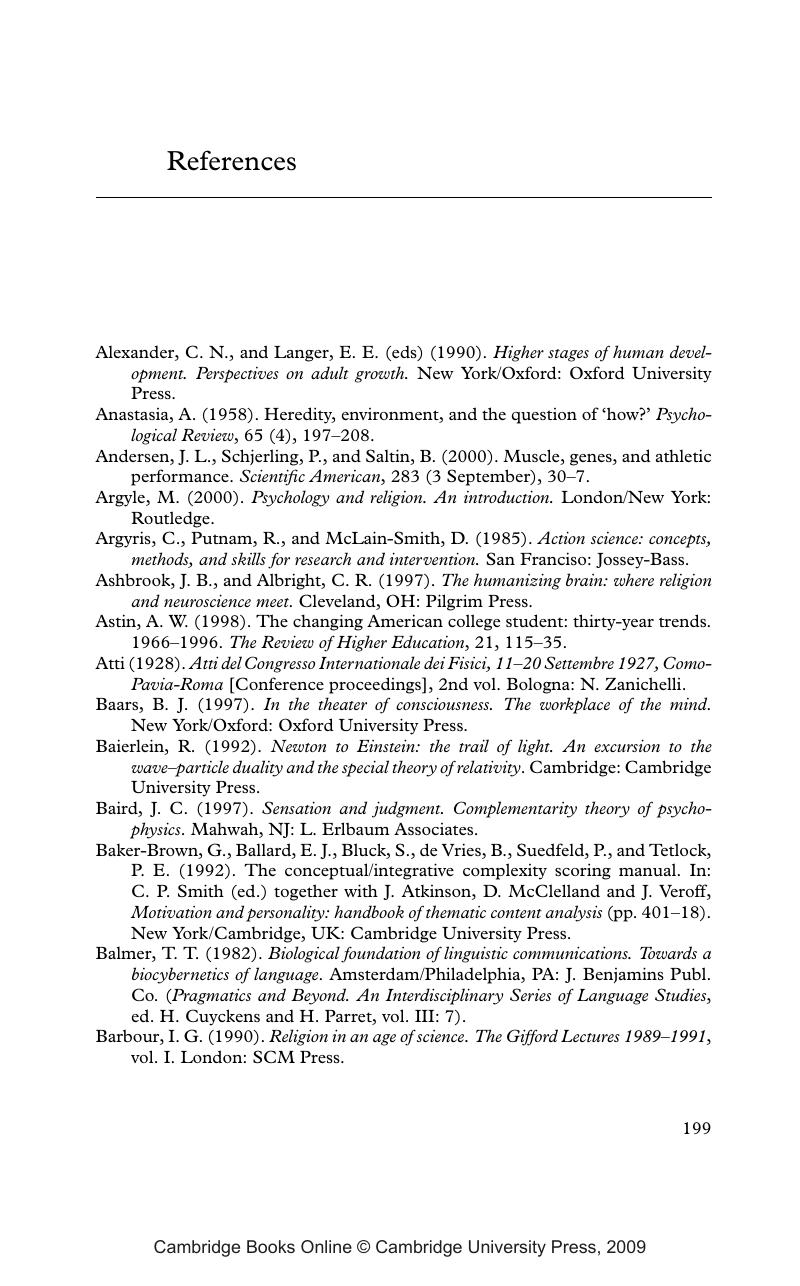 Developing the Horizons of the Mind
Developing the Horizons of the Mind Book contents
References
Published online by Cambridge University Press: 22 September 2009
Summary

- Type
- Chapter
- Information
- Developing the Horizons of the MindRelational and Contextual Reasoning and the Resolution of Cognitive Conflict, pp. 199 - 218Publisher: Cambridge University PressPrint publication year: 2002


